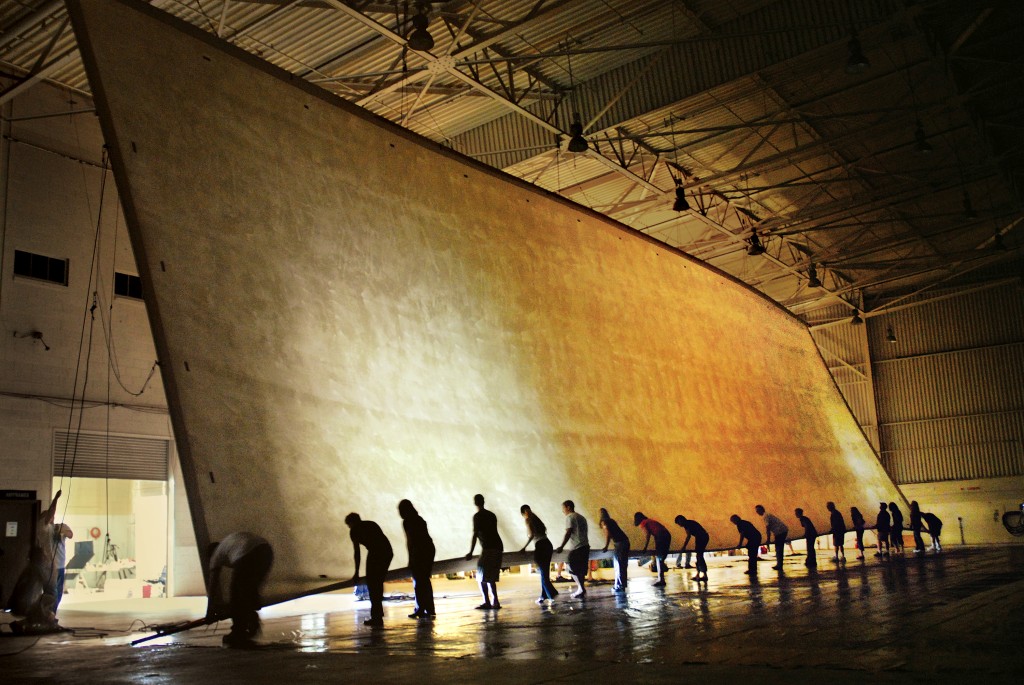
When the El Toro Marine Air Base was decommissioned, a group of photographers decided to document it for posterity before its structures succumbed to decay and the wrecking ball.
Mark Chamberlain, Jerry Burchfield, Douglas McCullough, Clayton Spada, Jacques Garnier and Rob Johnson since 2002 have documented the base, slowly transforming into Irvine’s Great Park.
As teachers of photography at Cypress College, Burchfield, Chamberlain, and Spada introduced their students to the base and the documentary process.
While brainstorming projects, the intrepid shooters came upon the idea of converting a jet hangar into a huge camera obscura, or pinhole camera, to create a black and white, three-story-high and 11-story-wide photograph known as the Great Picture.
Aided by roughly 400 volunteers, the photographers hand-applied 80 liters of gelatin silver halide emulsion to a seamless 3,375-square-foot canvas custom-made in Germany. Development was done in a custom Olympic pool-sized developing tray using 1,800 gallons of chemicals.
The group, save for the late Jerry Burchfield, will accompany this biggest silver gelatin print ever made to the Central Academy of Fine Arts (CAFA) in Beijing, China, where it will be on display through March 27. “There are very few places in the world that can accommodate a work this large and the CAFA museum is one of them,” said Chamberlain, a Laguna Beach resident and owner of BC Space gallery.
The Great Picture will also be included this fall in “Pacific Standard Time,” a planned art exhibition at UC Riverside. “The biggest challenge will be to make it fit their space,” said Chamberlain.
The most recent challenge was to find shipping containers large enough to fit the photo and its mounting apparatus. “We have had to not only find the right size and shape, but there are also restrictions on the kind of wood we were allowed to use,” he said. “Then there was the challenge of translating all didactic materials into proper Chinese and the paperwork that accompanies a project of this magnitude.”
In one sense taking the Great Picture to Beijing closes a circle as Chinese philosopher Mo-Ti reportedly first envisioned the concept of a camera obscura more than 2,400 years ago, referring to it as a “locked treasure room.”
http://www.cafamuseum.org




